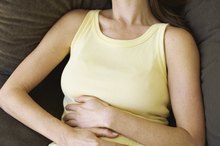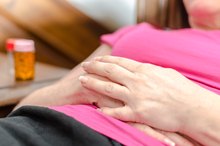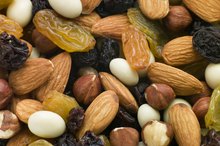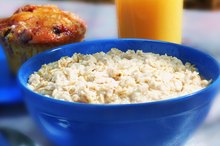Diverticulitis is the inflammation of abnormal pouches that bulge outward through the wall of the colon. The pouches are known as diverticuli, and the condition of having the pouches is known as diverticulosis 1. When the pouches become inflamed, the condition is known as diverticulitis. According to the Mayo Clinic, diverticulitis is common in people over 40 years of age. A colonoscopy is used to diagnose diverticulitis.
Colonoscopy
A colonoscopy is a test that enables the direct examination of the lining of the large intestine (rectum and colon). A flexible fiberoptic scope, known as a colonoscope, is inserted into the rectum and colon, and the lining of the colon is examined. A colonoscopy is usually conducted regularly in patients over 50 years ago, but may be recommended for younger patients with unexplained bowel habits and other symptoms of colon problems.
Diagnosis of Diverticulitis using Colonoscopy
What Things Are Found During a Colonoscopy?
Learn More
Gastroenterologists are typically able to detect abnormal pouches found on the wall of patients suffering from diverticulosis using a colonoscopy and other intestinal procedures. A colonoscopy test should be avoided in patients with existing acute diverticulitis as the test could lead to complications such as perforation and peritonitis. Peritonitis or inflammation of the abdominal cavity may occur when an inflamed pouch is ruptured by a colonoscope leading to the leakage of colon contents into the abdominal cavity.
Causes of Diverticulitis
According to the National Institutes of Health, diverticulitis is caused by a low fiber diet, aging and lack of exercise 1. Constipation due to lack of fiber in the diet contributes to formation of abnormal pouches on the colon. Fiber is important in preventing diverticulitis by softening stool and lowering pressure inside the colon. High pressure against the colon from stool causes the colon to form outward pouches on weak spots along the colon.
- According to the National Institutes of Health, diverticulitis is caused by a low fiber diet, aging and lack of exercise 1.
- Fiber is important in preventing diverticulitis by softening stool and lowering pressure inside the colon.
Symptoms of Diverticulitis
What Are You Not Supposed to Eat If You Have Diverticulosis?
Learn More
Diverticulitis is treated using broad spectrum antibiotics and pain medications. Patients may also require hospitalization, intravenous fluids and bed rest. Patients may also require surgery with temporary colostomy to remove areas of colon inflammation.
Complications of Diverticulitis
Complications of diverticulitis include:
- bleeding
- infection
- perforation
- abscess
- blockage in the colon
- formation of fistula
- peritonitis
Patients with active diverticulitis should avoid having a colonoscopy to prevent further complications.
Related Articles
References
- The National Institutes of Health: Diverticulitis and Diverticulosis
- Granlund J, Svensson T, Olén O, et al. The genetic influence on diverticular disease--a twin study. Aliment Pharmacol Ther. 2012;35(9):1103-7.
- Peery AF, Barrett PR, Park D, et al. A high-fiber diet does not protect against asymptomatic diverticulosis. Gastroenterology. 2012;142(2):266-72.e1. doi:10.1053/j.gastro.2011.10.035
- Crowe FL, Appleby PN, Allen NE, Key TJ. Diet and risk of diverticular disease in Oxford cohort of European Prospective Investigation into Cancer and Nutrition (EPIC): prospective study of British vegetarians and non-vegetarians. BMJ. 2011;343:d4131. doi:+10.1136/bmj.d4131
- Strate LL, Morris AM. Epidemiology, Pathophysiology, and Treatment of Diverticulitis. Gastroenterology. 2019;156(5):1282-1298.e1. doi:10.1053/j.gastro.2018.12.033
- Strate LL, Liu YL, Aldoori WH, Syngal S, Giovannucci EL. Obesity increases the risks of diverticulitis and diverticular bleeding. Gastroenterology. 2009;136(1):115-122.e1. doi:10.1053/j.gastro.2008.09.025
- Aune D, Sen A, Leitzmann MF, Tonstad S, Norat T, Vatten LJ. Tobacco smoking and the risk of diverticular disease - a systematic review and meta-analysis of prospective studies. Colorectal Dis. 2017;19(7):621-633. doi:10.1111/codi.13748
- Aune, D.; Sen, S.; Leitzmann, M. et al. "Tobacco smoking and the risk of diverticular disease - a systematic review and meta-analysis of prospective studies." Colorectal Dis. 2017; 19(7):621-33. DOI: 10.1111/codi.13748.
- Crowe, F.; Appleby, P.; Allen, N. et al. "Diet and risk of diverticular disease in Oxford cohort of European Prospective Investigation into Cancer and Nutrition (EPIC): a prospective study of British vegetarians and non-vegetarians." BMJ. 2011; 343: d4131. DOI: 10.1136/bmj.d4131.
- Granlund, J.; Svensson, T.; Olén, O. et al. "The genetic influence on diverticular disease—a twin study." Aliment Pharmacol Ther. 2012; 35:1103-7. DOI: 10.1111/j.1365-2036.2012.05069.x.
- Strate, L.; Liu, Y.; Aldoori, H. et al "Obesity increases the risks of diverticulitis and diverticular bleeding." Gastroenterology. 2009;136(1):115-22.e1. DOI: 10.1053/j.gastro.2008.09.025.
- Tursi, A. "Diverticulosis today: unfashionable and still under-researched." Ther Advances Gastroenterol. 2015; 9(2):213-28. DOI: 10/1177/1756283x1562128.
Writer Bio
Esther Kinuthia is a registered nurse with extensive experience in health and wellness. She holds a B.S. in nursing, B.A in psychology and has worked for more than ten years in the health-care field. She enjoys writing articles on a variety of topics for the Internet. Her work has been published in various websites.







